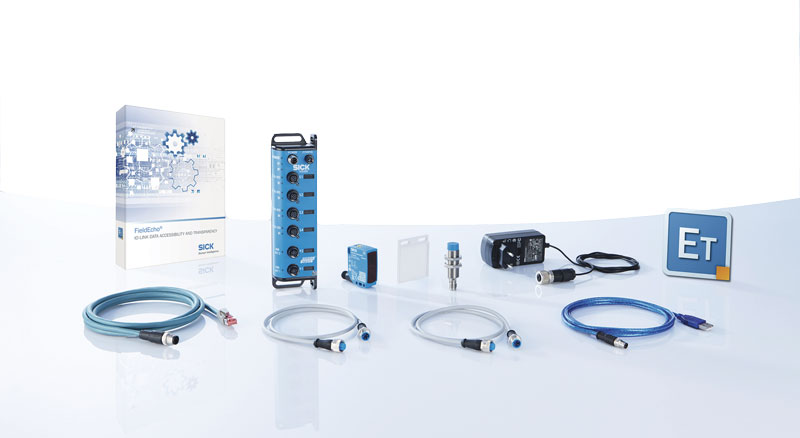Software Tool for IO-Link Data
FieldEcho® from Sick is a software tool for easy, open-system and manufacturer-independent integration of IO-Link devices. It minimizes development and programming effort in the control system, and the user has complete access at all times using a browser or HMI
by Noemi Sala
On the market there is a solution from Sick for the control integration of IO-Link devices with the FieldEcho®. This software tool is able to automatically detect all IO-Link components in a machine and independently download their device descriptions (IÒDDs). The user can use the graphic web-based user interface to integrate connected IO-Link devices independently of automation systems, fieldbuses and IO-Link master modules and parameterize and monitor them throughout their entire life cycle.
The FieldEcho closes any existing integration gaps, creates direct access to the process and service data of all IO-Link devices and makes handling these as simple as possible. In the process, the FieldEcho guarantees complete transparency of device data, thereby supporting commissioning and monitoring during system operation as well as targeted maintenance measures.
Future-proof connectivity
With FieldEcho, the user has complete access to all IO-Link device data at all times using a browser or HMI. Communication is dependent on the system – it can be done via different PLCs, fieldbuses and IO-Link masters. The development effort for setting up data transmission in the control is very minor. Only a single line of PLC code must be written, which calls up the function block generated and delivered by the FieldEcho to send read or write requests to the IO-Link devices. The PLC cycle time remains unaffected by this.
The typical IT processes of providing and transmitting IO-Link data for control tasks and Industry 4.0 applications is another central feature of the FieldEcho. With read and write data access, the software thus communicates with the machine PLC via OPC UA or TCP/IP. The use of both protocol standards which are widely used in industrial communication ensures a high degree of connectivity and also that the product permanently remains future-proof. The same applies for the REST API, which the FieldEcho also makes available. It makes it possible to transmit IO-Link device data to ERP and MES systems as well as cloud-based services in JSON format in order to take advantage of the world of Industry 4.0.
The user interface enables a complete overview at all times
The graphic web-based user interface of the FieldEcho supports the user in many ways. In the system and IO-Link master overview, it visualizes all configured IO-Link masters and the IO-Link sensors and actuators which are connected to the ports.
The status of the IO-Link devices is also displayed. All IO- Link devices can also be completely parametrized using the interface. The software also makes it possible to zoom into the data of the IO-Link device by opening the device-specific screen page. In addition to the product data, the incoming and outgoing process data is visible at a glance.
The FieldEcho user interface therefore enables a complete overview of the entire IO-Link system of the machine at all times.
The IO-Link data which is transmitted from the FieldEcho into higher IT levels via REST API can be displayed on the FieldEcho dashboard. To do so, it automatically connects to the FieldEcho and structures the interface using the selected and received process data and device parameters. This is done dynamically and all on its own – completely without configuration effort for the user. The software tool also enables a complete overview of the status of all IO-Link devices directly in ERP systems, MES environments, proprietary applications and cloud-based services. In parallel, the dashboard also loads the IO-Link data to an integrated database. Applications and services no longer have query the data for their purposes via REST API, but can directly access the database.
This reduces the communication load to the fieldbus and via IO-Link.

